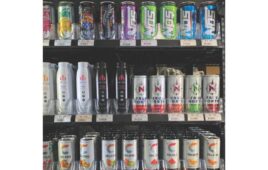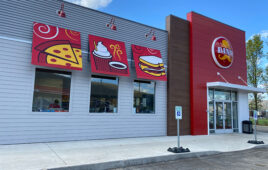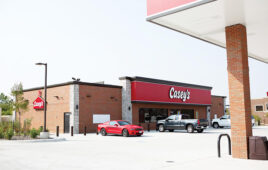 By John Lofstock, editor-in-chief
By John Lofstock, editor-in-chief
There’s no doubt that 2017 will be regarded as one of the most challenging years ever for the convenience store and petroleum industry. While the economy has strengthened, the stock market rallied and unemployment fell to a 15-year low, the convenience store industry was hit hard by a host of local and federal regulations that threaten sales and profits.
What’s more concerning is that these regulations span so many different areas forcing retailers to engage in a multisided battle often against lawmakers who care very little about their financial wellbeing.
Whether it is menu labeling, restrictions on tobacco, increasing the minimum wage, overtime regulations, SNAP, transportation and infrastructure funding or swipe fees, convenience stores cannot afford to give up the fight. In fact, battling government at all levels has become as much a part of the convenience store business as selling snacks and beverages.
To ensure that the industry is successful in the future, retailers must embrace advocacy. Against the odds, convenience store and petroleum marketers have gained so much over the past decade. It stands to reason then that the industry also has so much to lose by this recent spate of legislation that seems aimed at backing marketers into a corner.
Fortunately, the convenience store industry has matured through the years and excels at meeting the customers’ needs. Consumer loyalty and repeat visits are by-products of the industry’s outstanding service and commitment to convenience. Loyalty to the c-stores is evident in the numbers. According to NACS, convenience stores serve 160 million customers per day—that’s more than 58 billion customers annually—nearly 6% of the total U.S. economy.
Convenience stores aren’t just a part of American culture, they are central to our daily lives.
There are 155,000 c-stores in the U.S., or one store for about every 2,100 people. The average time it takes a customer to walk in, purchase an item and depart is between 3 to 4 minutes. The average store selling fuel has around 1,100 customers per day.
The industry has worked hard to build this loyalty, yet the unintentional by-product of this success is that lawmakers have noticed, many of whom view c-stores as a cash cow to bankroll their lofty, and often unnecessary, regulations.
In short, 2018 will be a critical election year for convenience store owners on crucial issues ranging from wage hikes and tobacco regulations to debit card fees and fuel standards. Where you stand on the issues is not nearly as important as your active support of the industry’s grassroots efforts to promote legislation that is in the best interest of convenience store owners. The stakes are much too high to sit this one out. It’s time to let your voice be heard.
New Year, New Design
With the start of the New Year, Convenience Store Decisions is proud to launch a redesign of our editorial pages. Working collaboratively with the editorial team, Creative Director Erin Canetta designed a distinct visual identity for each section of the magazine and adopted a new system of grids, fonts and visual devices to reflect the highly modern sensibility of the magazine.
The new design is cleaner with an easier-to-read font and extra white space to make the pages more visually appealing. We’ve also rebranded and redesigned the new products section to reflect how important product innovation is to c-store sales.
In addition to upgrading our look, we are committed to using more infographics, professional photography, retailer guest columns and incorporating social media to ensure that retailers can make their voices heard in real time as they react to crucial issues affecting their businesses.
In short, our goal is to create a platform that helps you become a more successful operator and is a trusted partner in your quest to find useful industry information—no ego, no pretense.




